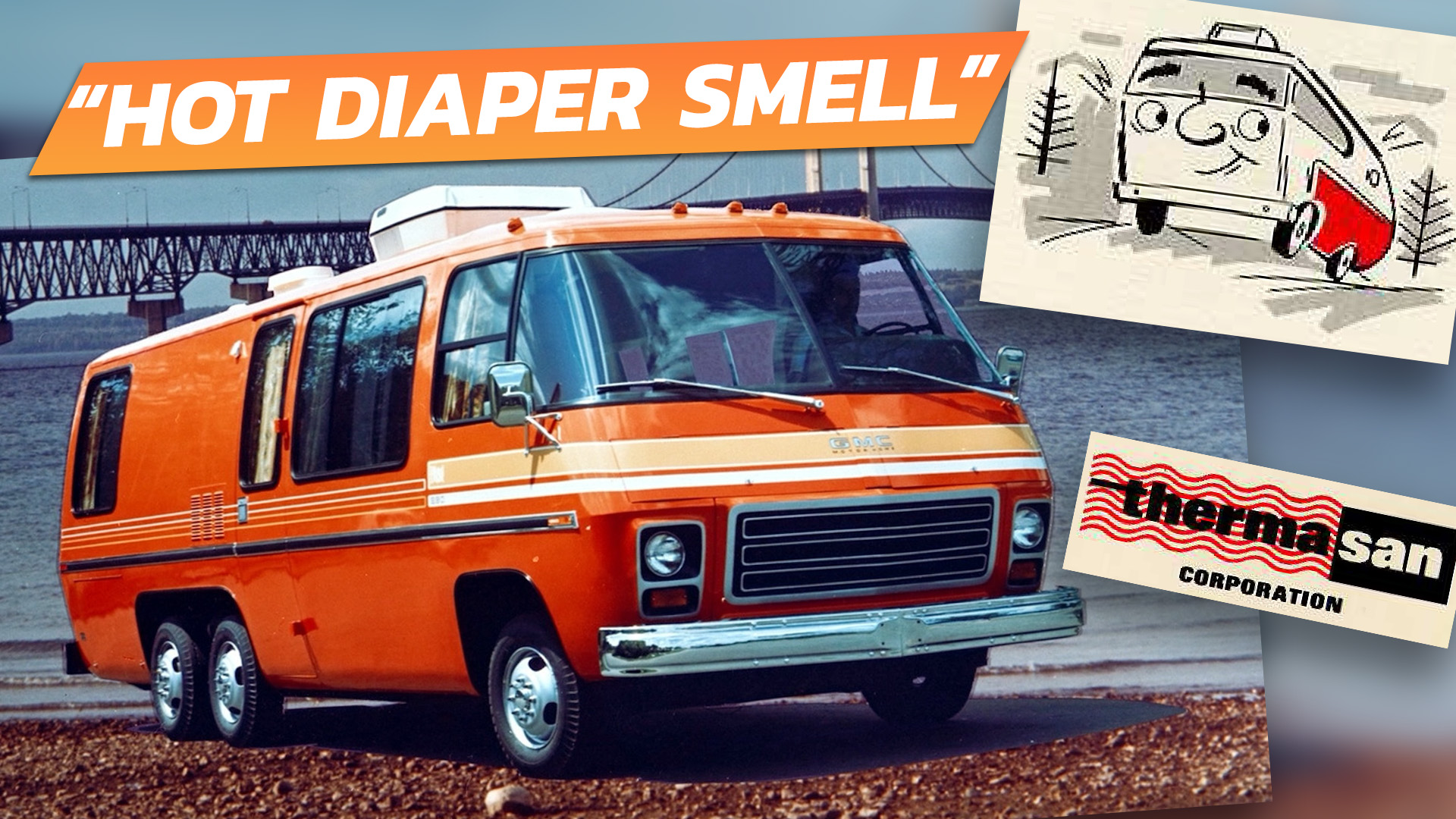
GMC, Thetford Corporation
The 1973 GMC Motorhome was—and still is—a sight on the road today. This groundbreaking RV was just as interesting as its sleek body, with a V8 powering the front wheels and a spectacularly 1970s interior. And because it was the early ’70s, we had a different notion of what was okay to spray into the atmosphere as you drive. Like sewage, which an obscure option allowed this GMC to do.
One of the options available for the GMC Motorhome was a system called Thermasan, which promised to improve on one of the worst parts of RV ownership: Black water. That’s a euphemism for the raw sewage, which accumulates in an onboard tank and has to be disposed of at dumping stations. It’s as gross as it sounds, and it’s why someone at RV accessory manufacturer Thetford Corporation thought there had to be a better way. And so, the Thermasan was born.


GMC motorhome and Thermasan diagram. Helmut Reiss/United Archives, GMC via CarsWP.com
The premise of the Thermasan “waste destruction system” was simple: Dump black water through the hot exhaust to sanitize and dispose of it. According to a maintenance manual for the 1973 model, this was done using a wiper motor-powered pump connecting the black water tank to the exhaust, where it was plumbed in just upstream of the muffler. A screen prevented solid waste from entering and clogging the system, which would’ve been hellacious to fix. Amusingly, Thetford called the exit an “ejection orifice.” The jokes write themselves.
The system was controlled through a panel to the right of the steering column, which had an on-off switch, a pump test switch, and three status lights. When turned on, it would activate when it got the signal from sensors in the drivetrain indicating that vehicle speed exceeded 35 mph and exhaust temperatures passed 900ºF. That way, it’d be hot enough to sanitize what came out the back end (heh), and supposedly make it odorless. At that speed, the five gallons-per-hour (or one teaspoon per second) flow rate also shouldn’t be enough for the remains to meaningfully accumulate on streets, either.
Now, the Thermasan wasn’t meant to completely dispose of all waste, as solids remained behind that screen. It was also designed not to fully drain the tank of fluids, so its contents didn’t dry out and harden. But it still meant draining things the old-fashioned way was less frequent, with a pamphlet estimating just one or two emptyings yearly.




Thermasan pamphlet and control panel. Thetford Corporation, GMC, Jamie Ellen Baker
The Thermasan evidently didn’t catch on, as it’s not not a staple in modern RVs. Exactly why was outlined by a former Thetford employee in a post on a GMC motorhome forum, and it largely came down to timing. Remember, this was 1973; the year of the oil embargo and just a couple years after the Environmental Protection Agency‘s foundation. Sales of gas-guzzling motorhomes were in the toilet, and their manufacturers were going bankrupt en masse. States were also beginning to develop their own emissions laws, and Thetford apparently wasn’t able to convince them that the Thermasan didn’t mess with emissions controls.
It wouldn’t have helped that while Thetford’s marketing materials claimed odor molecules would be burned up, its former employee says otherwise. Apparently, urea and ammonia in the waste went untreated, leading to what the employee described as “hot diaper smell” while the system was in use. And you thought rolling coal was bad.


GMC Motorhome. GMC via CarsWP.com
In the end, it’s for the best that RV owners didn’t get used to ridding themselves of waste this way. It may be convenient for owners, but it’d be deeply unpleasant for everyone else on the road (never mind how nasty it’d be to service). No man is an island, and a society where everyone only does right by themselves is no society at all.
Got a tip or question for the author? You can reach them here: [email protected]
>>> Read full article>>>
Copyright for syndicated content belongs to the linked Source : Hacker News – https://www.thedrive.com/news/culture/gmc-made-a-motorhome-that-pumped-sewage-through-its-exhaust-on-purpose






























